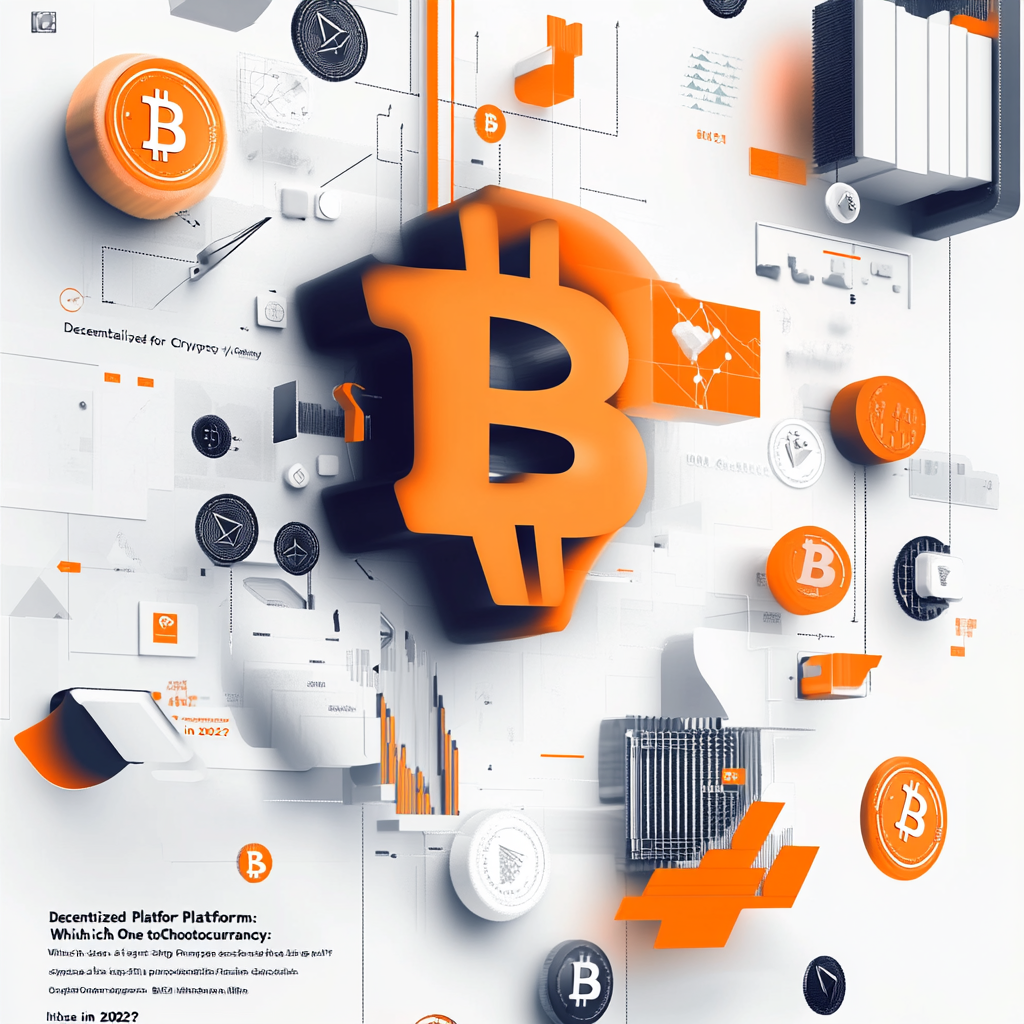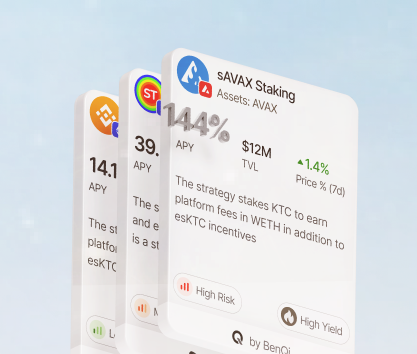The current size of the DeFi sector is quite impressive. Despite the slowdown after the peak reached in 2022, the total value locked across all tracked protocols is $84 billion, the stablecoins market capitalization is reaching $172 billion, and daily trading volumes are consistently eclipsing $7.7 billion. Liquid staking is still one of the biggest categories of DeFi protocols with Lido and EigenLayer controlling over $35.7 billion (close to 42% TVL share).
Some have a strong faith that we are living in those freakishly turbulent times for finance as it is turning from a fully centralized ecosystem into a sporadically decentralized one. Die-hard enthusiasts are trying to convince everyone else that the DeFi day is nigh. While such dreams remain unreachable as CeFi offers a wide range of benefits that DeFi is still struggling with, it is true that cryptocurrencies are gaining ground in some key industries and regions.
Selecting the right type of platform is a challenge for any investor. First-hand experience and extensive research are prerequisites that many newcomers lack due to obvious reasons. We want to give you a comprehensive overview of the sector and point in the general direction of some hugely popular protocols that are changing the way we look at finance.
The history of the ecosystem is quite short. In 2008, Bitcoin launched as the first cryptocurrency that users had to trade on unreliable P2P platforms where the counterparty risk was a big obstacle on the way to wider adoption. Clever tech geeks like Vitalik Buterin came up with an incredibly elegant solution. They wanted to build an environment where every operation could be conducted in a trustless and permissionless manner.
Decentralized exchanges (DEX) were among the first protocols using smart contracts to facilitate trustless asset swaps. The idea was simple: instead of using middlemen and adding unnecessary centralization, a tiny program that executes its code under specific conditions could act as one. Many DEXes have fees lower than 0.1% which is 3 — 5 times cheaper compared to the most affordable CEXes.
Here are some benefits of using decentralized platforms for crypto:
- Self-custody. Coinbase conducted a survey among its users. Without a single surprise, it found that over 70% of coin holders have stronger faith in non-custodial wallets than in whatever a CEX can cook up. In general, crypto enthusiasts who have been around for long enough to see the rise and fall of privately owned companies simply distrust them and think that every sane individual should manage their digital assets personally. “Stay away from my crypto!” is the motto of the whole community.
- Security is incredibly high if you work with protocols that ensure smart contract safety through extensive code audits and by running bug bounty programs. For example, MakerDAO, Near Protocol, and Aurora Smart Contract offer over $1 million to users who can find critical vulnerabilities in their code. Since users do not interact with centralized entities, they take full responsibility for the safety of their tokens.
Accessibility. Unlike traditional financial institutions (banks, credit organizations, etc.) that often don’t have a choice and must restrict access to their platforms due to some local regulations made up by politicians, decentralized platforms can be easily used by anyone with an internet connection. The World Bank says confidently that 1.7 billion people are still unbanked globally. What it means is that cryptocurrencies and decentralized finance platforms are becoming increasingly important if we, as a society, want to keep our little ball spinning without revolutions happening everywhere.
Before the rapid growth of the DeFi sector, the vast majority of transactions in the crypto industry were facilitated by CEXes competing only against P2P platforms. Centralized exchanges are facing much fiercer competition now with DEXes processing over $7 billion daily and having over $18.2 billion in combined TVL. While still not even close to the volumes of CEX platforms (Binance alone handles over $23 billion of volume daily), the growth of the sector is undeniable.
Here are some key advantages of DeFi protocols compared to centralized platforms:
- No single point of failure. CEXes can be attacked by hackers exposing all client funds to potential theft. In November 2023, Poloniex was hacked by unknown criminals and lost over $125 million in Ethereum, Tron, and Bitcoin. Coincheck infamously collapsed after losing $532 million in the largest hacker attack in history. DEXes may have exploitable smart contracts but users are usually safe if they do not interact with faulty ones.
- The democratization of finance. DEXes do not discriminate. While some protocols are implementing basic KYC and AML practices, the vast majority of decentralized platforms are offering their services to all users without asking where they are from and how they want to use funds. This accessibility can be incredibly useful and allow users from certain regions like the CIS, SEA, and the Middle East to participate in the global economy without any hassles.
- Full transparency. All decentralized protocols allow users to verify the integrity of transactions using on-chain data which is immutable and tamper-proof. CEXes are run by potentially corrupt individuals and can hide crucial financial information from clients. The infamous FTX case where investors lost $.17 billion collectively serves as the most impactful cautionary tale and an example of how CEXes can mislead users by not disclosing essential financial information.
The already discussed general advantages of decentralized protocols are also applicable to the comparison between DEXes and CEXes. Self-custody, better security, and accessibility are some of the strongest arguments in favor of decentralization.
Despite offering a much higher level of risk on the platform level than CEXes, individuals have to be worried about risks that are uniquely associated with DeFi protocols. Let’s examine some of the dangers that many investors may encounter:
- Smart contract vulnerabilities. Bridges in particular are being targeted by hackers since many of these protocols use Oracles which are centralized entities. Since there are usually two transactions handled by smart contracts, the risk is much higher as security measures may not be robust enough on both ends of a transaction. Over $2.8 billion has been lost to hacks across all bridges to date.
- Low liquidity can be a huge issue for any decentralized protocol hence many DEXes are competing for it fiercely. When liquidity is removed from a decentralized platform for any reason, users may experience issues like slippage, price volatility, inability to liquidate assets, and other problems. Unfortunately, the combined TVL in the industry declined significantly since 2022 indicating a lower level of liquidity than necessary for the wider adoption of DeFi tools.
- Impermanent loss is something that many DeFi investors have to worry about at all times. It occurs when the price of assets locked in vaults and pools declines compared to the entry price. Since many liquidity pools must adjust asset compositions to maintain parity, it leads to significant losses in gas fees and price discrepancies. The loss is called impermanent because prices may recover. Sadly, up to 40% of liquidity providers on Uniswap and SushiSwap lose money due to this problem.
- Decentralized platforms and scalability issues. One of the biggest problems for many protocols is that they have limited capacity for growth and face challenges when the user base grows with many individual investors experiencing negative consequences of network congestion, higher fees, and other problems that are not easy to solve as underlying blockchains often have their own technological limitations. While rollups and other layer-2 solutions help immensely, we are still not close enough to a world where DeFi platforms have higher throughput than many CeFi ones.
- Decentralized platforms and regulatory challenges. The issue with regulation is often at the center of any discussions surrounding cryptocurrencies in general. The lack of insurance and consumer protection makes it quite dangerous for newcomers to venture into the wilderness of the DeFi ecosystem. The prevalence of rug pulls and so-called exit scams does not help in the least. For example, AnubisDAO is an infamous example of founders disappearing with over $60 million collected from investors. In 2021, the total amount of money lost to scams was over $2.8 billion.
All these issues create barriers that prevent institutionalized and individual investors from entering the DeFi ecosystem and allocating capital to various protocols offering incredibly generous rewards.
The issue of volatility demands a separate article altogether as it is simply the defining characteristic of the whole crypto market. In DeFi, volatility can affect investors in multiple ways creating a unique set of dangers that many tradfi investors may have never experienced:
- The direct effect of volatility is excellently illustrated by the “Black Thursday” that happened in March 2020 when the price of ETH was halved in just a day with MakerDAO liquidating over $8 million in a single sweep. On September 16, 2024, the price of Bitcoin, BNB, and Solana dropped by 5% after an assassination attempt on former US president Donald Trump causing over $118 million in liquidations.
- Collateral liquidations are fully automated with terms set in stone by the smart contract code. It means that price fluctuations may cause automatic liquidations and leave investors with heavy losses if they do not have sufficient funds to cover the difference quickly. In 2021, decentralized lending protocols had to liquidate over $720 million in loans due to price drops.
- Speculative assets are way less predictable than many tradfi instruments. For example, the volatility of the US dollar averages at 0.6% volatility daily while BTC experiences 4.27% volatility. Monthly numbers are even more illustrative as the US dollar reaches roughly 2.6% while BTC can easily eclipse 25%.
With all of the above, it may be surprising that the DeFi sector is still recovering after the dip following the 2022 market crash. However, there are some obvious reasons. For example, many unique investment instruments like liquid staking and yield farming. Investors who are interested in exploring novel capital allocation methods will find it incredibly rewarding to put money into pools promising huge returns!
This particular method of investment is all about staking tokens in exchange for rewards in native or governance tokens from DeFi protocols. In some cases, platforms may offer layer-2 tokens as incentives which can be a more lucrative proposition for some investors. You can choose from a long list of strategies and increase risks and rewards to exorbitant levels.
The combined TVL of protocols specializing in yield farming is over $5.3 billion as of October 2024. Currently, over 520 protocols are offering various forms of yield farming pools with all sorts of rewards.
Below are some interesting DeFi yield farming protocols that you may be interested in checking out:
- Pendle is a relatively new Ethereum protocol operating across 5 chains including Arbitrum, Mantle, BSC, and Optimism. Pendle has a massive TVL of over $1.9 billion and 136 tracked pools with limited maturation dates averaging at 19.33% APY. Rewards are paid in PENDLE tokens with 68 pools offering yields from 0.08% to 17.78%. The reward token gained over 400% since October 2023.
- Convex Finance is another Ethereum-based yield protocol that offers CRV/CVX rewards and operates with Curve DEX to offer a variety of liquidity pools. Currently, the platform has 224 tracked pools with an average APY of 9.56%. Rewards can be acquired by investing in 127 different pools. You can expect to gain anywhere from 0.01% to 249%.
- Coinwind is primarily deployed on Binance Smart Chain with a TVL of $234 million. Investors can put assets into single-sided pools on Ethereum, BSC, or Heco. Rewards are paid in COW tokens. Currently, the protocol is switching to the third version and does not have much user activity. However, it is an interesting choice for people who do not want to focus on Ethereum.
- Pancakeswap is one of the biggest DEXes. It offers a wide range of investment opportunities and pays in base interest rates and CAKE rewards. The protocol has 269 tracked pools with an average APY of 42.39%. You can invest from multiple chains like Arbitrum, Ethereum, BSC, and others. Rewards are offered in 134 different pools with CAKE APYs ranging from 0.49% to 775%.
Note that we do not endorse any of the projects listed above and encourage all our readers to do their own research before committing to any of the protocols. Newcomers should also start with platforms like Rivo.xyz that offer a more holistic approach to investing. For instance, you can invest in indexes like the DeFi Core Index with a 13.3% APY instead of choosing separate pools or various strategies that were designed by experienced professionals.
We strongly recommend exploring the world of DeFi since it is expected to grow significantly within the next decade. You can still be “early” and enjoy the benefits of decentralization way before they become mainstream.









